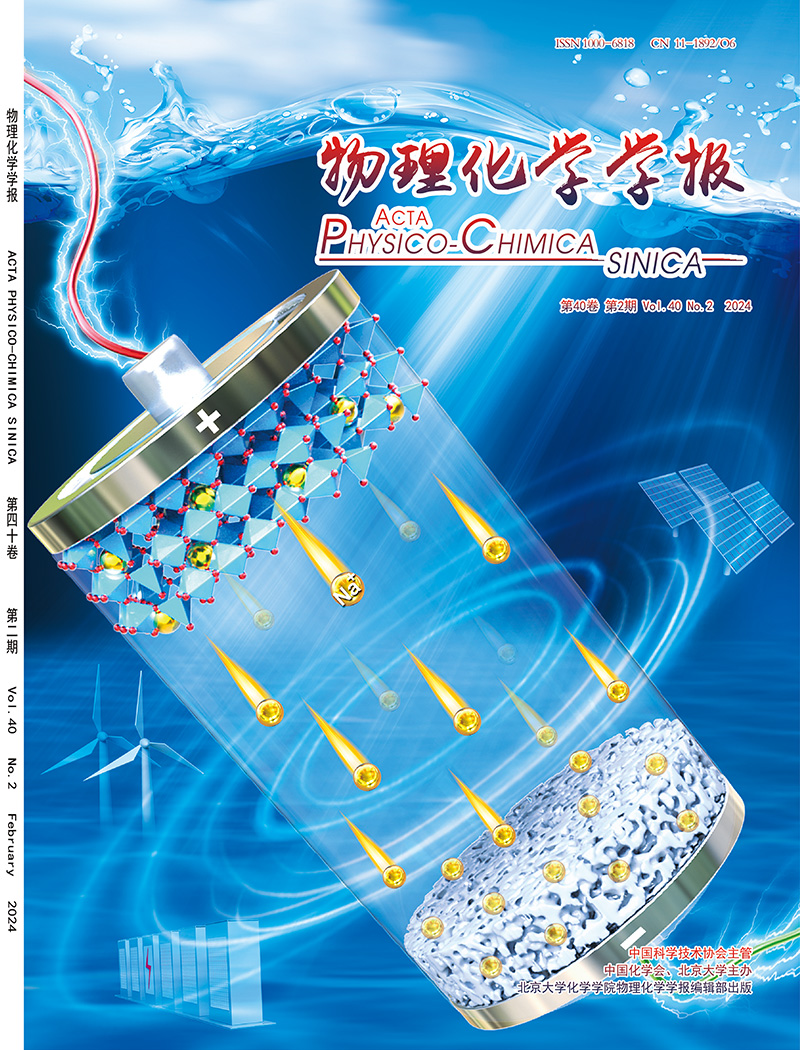锂金属电池用磷腈基阻燃人工相间层
IF 13.5
2区 化学
Q1 CHEMISTRY, PHYSICAL
引用次数: 0
摘要
电动汽车、无人机、机器人等新兴领域的快速发展,推动了对能量密度更高、安全性更高的二次电池的需求。锂金属阳极(LMA)因其高比容量(3860 mA h·g−1)和低氧化还原电位(与标准氢电极相比为- 3.04 V)而被广泛认为是下一代可充电电池的理想阳极材料。然而,LMA面临着重大挑战,主要是枝晶的不可控生长及其固有的热失控倾向。为了解决这些问题,本研究提出了一种新型的硅氧烷功能化六苯氧环三磷腈(HPCTP)基多孔聚合物(SHPP)人工相间层,通过Friedel-Crafts烷基化合成,以获得高度稳定的LMA性能。N2吸附/解吸分析证实了SHPP具有分层纳米孔结构,孔径约为0.5和0.6 nm,有效地限制了PF6−阴离子的迁移。因此,液态电解质中的锂离子转移数从0.29增加到0.60,有助于抑制锂枝晶的生长。此外,SHPP丰富的纳米孔结构显著提高了其与电解质的润湿性。原位热重分析结合傅里叶变换红外光谱(TG-FTIR)显示,SHPP在约410°C时分解,产生磷酸盐自由基(PO•),灭掉酯基电解质热分解过程中产生的高活性羟基(HO•)和氧(O•)自由基,有效降低热失控风险。热分析和点火试验证实了SHPP优异的热稳定性和阻燃性能。半原位x射线光电子能谱(XPS)分析表明,裸锂金属表面的固体电解质界面(SEI)主要是有机的,并且在循环过程中会发生明显的成分波动。相反,SHPP-Li上形成的SEI富集了磷化锂(Li3P)和氟化锂(liff),增强了离子电导率,提高了化学稳定性,导致整个循环过程中SEI成分稳定。SHPP不仅促进了界面锂离子的传输,而且还促进了化学坚固界面相的形成。原位光学显微镜和半原位场发射扫描电镜(FE-SEM)图像表明,SHPP人工界面有效抑制了锂枝晶的生长,实现了均匀的锂沉积。结果表明,SHPP-Li||SHPP-Li对称电池在0.5 mA cm−2和0.5 mA h·cm−2下可稳定循环1600 h。此外,SHPP-Li||LiNi0·8Co0·1Mn0·10o2充满电池在1 C (1 C = 190 mA g−1)下循环500次后,其容量保持率高达76.8%。这种阻燃人工相层为设计无枝晶和安全的lma提供了一种很有前途的策略。本文章由计算机程序翻译,如有差异,请以英文原文为准。

Phosphazene-based flame-retardant artificial interphase layer for lithium metal batteries
The rapid development of emerging fields such as electric vehicles, drones, and robotics has driven the demand for secondary batteries with higher energy density and enhanced safety. The lithium metal anode (LMA) is widely regarded as an ideal anode material for next-generation rechargeable batteries due to its high specific capacity (3860 mA h·g−1) and low redox potential (−3.04 V vs. standard hydrogen electrode). However, LMA faces significant challenges, primarily the uncontrollable growth of dendrites and its inherent propensity for thermal runaway. To address these issues, this study proposes a novel silsesquioxane-functionalized hexaphenoxycyclotriphosphazene (HPCTP)-based porous polymer (SHPP) artificial interphase layer, synthesized via Friedel-Crafts alkylation, to achieve highly stable LMA performance. N2 adsorption/desorption analysis confirms that SHPP features a hierarchical nanoporous structure, with pores of approximately 0.5 and 0.6 nm that effectively restrict the mobility of PF6− anions. As a result, the Li-ion transference number increases from 0.29 in liquid electrolytes to 0.60, which helps suppress Li dendrite growth. Additionally, the rich nanoporous structure of SHPP significantly improves its wettability with the electrolyte. In situ thermogravimetric analysis coupled with Fourier transform infrared spectroscopy (TG-FTIR) reveals that SHPP decomposes at approximately 410 °C, generating phosphate radicals (PO•) that quench highly reactive hydroxyl (HO•) and oxygen (O•) radicals produced during the thermal decomposition of ester-based electrolytes, effectively mitigating thermal runaway risks. Thermal analysis and ignition tests confirm the outstanding thermal stability and flame-retardant properties of SHPP. Semi-in situ X-ray photoelectron spectroscopy (XPS) analysis indicates that the solid electrolyte interphase (SEI) on bare Li metal is predominantly organic and undergoes significant compositional fluctuations during cycling. In contrast, the SEI formed on SHPP-Li is enriched with Li phosphide (Li3P), which enhances ionic conductivity, and Li fluoride (LiF), which improves chemical stability, resulting in a compositionally stable SEI throughout cycling. SHPP not only facilitates interfacial Li-ion transport but also promotes the formation of a chemically robust interphase. In situ optical microscopy and semi-in situ field-emission scanning electron microscopy (FE-SEM) images demonstrate that the SHPP artificial interphase effectively suppresses Li dendrite growth, enabling uniform Li deposition. As a result, SHPP-Li||SHPP-Li symmetric cells exhibit stable cycling for 1600 h at 0.5 mA cm−2 and 0.5 mA h·cm−2. Furthermore, SHPP-Li||LiNi0·8Co0·1Mn0·1O2 full cells maintain a high capacity retention of 76.8% after 500 cycles at 1 C (1 C = 190 mA g−1). This flame-retardant artificial interphase layer offers a promising strategy for designing dendrite-free and safe LMAs.
求助全文
通过发布文献求助,成功后即可免费获取论文全文。
去求助

 求助内容:
求助内容: 应助结果提醒方式:
应助结果提醒方式:


